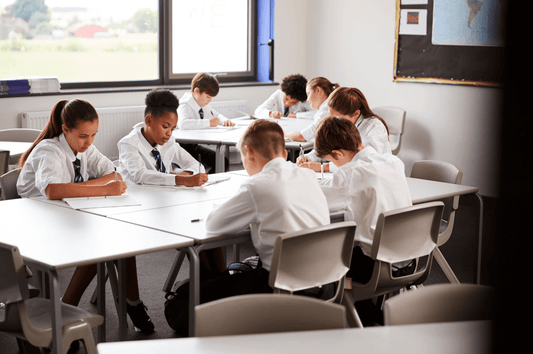Many industrial activities generate significant amounts of pollution – including VOCs (volatile organic compounds) and other chemicals, particles and microorganisms. To maintain a high level of air quality within an establishment, contaminated air is often vented to the outside, where it is diluted in the atmosphere. But do such industrial emissions add to outdoor pollution and pose a threat to the health of those who are exposed in the surroundings of the business generating them? What filtration for industrial emissions is required? What about people living near a chemical factory, or above a dry cleaner's shop, for instance? Do they have any protection in law from industrial emissions that may pollute land, water and the air?
Filtration for industrial emissions and the control of industrial emissions come under the Pollution Prevention and Control Regulations 2000 (now known as the Environmental Permitting Regulations, 2007), which define which businesses must have a permit for their activities. The waste management industry – which is a sector growing in importance alongside increasing interest in 'green' ways of reducing, recycling and managing waste – has its own regulations, known as the Waste Management Licensing Regulations 1994.
In recent years, stricter controls on the use of VOCs have been introduced across Europe, in the form of the Solvent Emissions Directive. The requirements of this Directive have been integrated into the Pollution Prevention and Control Regulations. Meanwhile, the Waste Incineration Directive was introduced to increase control over what waste can be burned and where. The requirements of this Directive also now form part of the Pollution Prevention and Control Regulations.
Under the above regulations, industrial premises are controlled generally according to their size and will be the responsibility of either the Environment Agency or the local authority. Thus, three types of premises can be distinguished:
Part A(1) installations: These are large industries like chemical plants and power stations. They are controlled by the Environment Agency which regulates industrial emissions to the air, land and water.
Part A(2) installations: These are medium-sized industries like brick manufacturers. They are considered unlikely to cause pollution to land but may do so to water and air. This type of premises' emissions is controlled by the local authority.
Part B installations: These are smaller premises and might include dry cleaners, crematoria and petrol stations. The main potential problem in such premises is air pollution and emissions are controlled by the local authority.
These are the industrial sectors which may need filtration for industrial emissions as well as a permit from the Environment Agency:
- Cement and lime activities
- Chemicals
- Clinical waste
- Coke, iron and steel
- Combustion plants, including power stations
- Discharges to surface water and groundwater
- Energy – gasification, liquefaction and refining industry
- Food and drink
- Groundwater
- Intensive farming (pigs and poultry)
- Landfill
- Mining waste
- Paper, pulp and cardboard manufacturing
- Printing and textiles – coating activities
- Production and processing of metals
- Radioactive substances activities – radioactive substances users
- Radioactive substances – nuclear
- Waste: incineration and energy recovery
- Waste treatment and storage.
The Environment Agency provides a check-list of the aspects of your business that could, potentially, create a pollution problem in the surroundings of the premises through the ventilation of industrial emissions, as follows:
Site Drainage
- Is contaminated water being emitted from the premises?
- Where is it going?
Storage
- Are storage containers fit for purpose, regularly inspected and maintained?
- Where are the containers kept? Are they secured?
- How are leaks and spills contained?
- What about the delivery and handling of potentially hazardous materials? What are your procedures?
Waste Management
- Are your procedures for storage and handling of potentially hazardous waste safe?
- Can you prove you are disposing of waste correctly?
- Do you really know where the waste from your business goes?
- What efforts are you making to reduce and recycle waste from your business?
Emergencies
- What plans are in place to deal with pollution or fire emergencies?
- Is staff training adequate and are your plans tested regularly?
Generally speaking, larger organisations tend to use huge air handling systems at a considerable cost to filter out industrial emissions before being released externally. However, sometimes these systems are already at capacity or are unavailable in certain areas. These power hungry air handling systems are often not an appropriate choice for smaller establishments or environments where a higher level of filtration is required. Fortunately, the systems supplied by Commercial Air Filtration can be easily configured to clean the air before being externally ventilated and are quick and easy to install, as well as very low in electricity consumption. Accessories such as the IQAir OutFlow are ideal for this purpose and will help to ensure compliance with legal limits on air pollution and local authority.
Email or speak to a member of Commercial Air Filtration's expert team for further information or advice.




